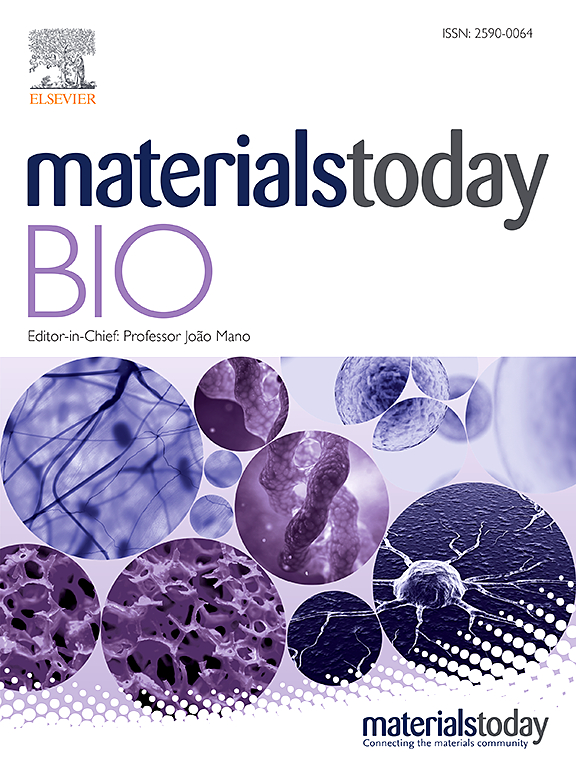pH/Hyal-responsive vancomycin-loaded chitooligosaccharide nanoparticles for intracellular MRSA infection treatment
IF 8.7
1区 医学
Q1 ENGINEERING, BIOMEDICAL
引用次数: 0
Abstract
Staphylococcus aureus (S. aureus) is recognized as among the most critical bacterial pathogens globally. A significant portion of the complications associated with S. aureus infections arises from its ability to persist inside host phagocytes, particularly macrophages, making the eradication of intracellular S. aureus vital for therapeutic success. Regrettably, many antibiotics exhibit limited penetration into cells, underscoring the necessity for efficient intracellular delivery mechanisms. In this study, vancomycin-loaded chitooligosaccharide nanoparticles (COS@Van) coated with hyaluronic acid (HA), were engineered to function as an active-targeting antibiotic carrier recorded as HA/COS@Van. The HA coating serves as an external shell, which 1) covers the positive surface charge of COS NPs, thereby enhancing their biocompatibility and extending circulation time, and 2) facilitates targeted delivery to macrophages through specific interactions with the CD44 receptor. Confocal laser scanning microscopy (CLSM) and flow cytometry (FCM) experiments confirmed that HA/COS could effectively accumulate in methicillin-resistant S. aureus (MRSA) infected macrophages. Additionally, when administered intravenously in mouse models, HA/COS demonstrated markedly increased accumulation in the liver, the primary location of infected macrophages. These findings highlight the active-targeting capabilities of HA/COS both in vitro and in vivo settings. Consequently, after being loaded with Van, HA/COS@Van exhibited superior efficacy in killing intracellular MRSA in vitro, as compared to free Van. Furthermore, HA/COS@Van also demonstrated enhanced bactericidal activity in both mouse acute peritonitis model and mouse organ infection model. Therefore, this active-targeting delivery system may hold promise in advancing therapeutic outcomes for infections related to intracellular pathogens.

求助全文
约1分钟内获得全文
求助全文
来源期刊

Materials Today Bio
Multiple-
CiteScore
8.30
自引率
4.90%
发文量
303
审稿时长
30 days
期刊介绍:
Materials Today Bio is a multidisciplinary journal that specializes in the intersection between biology and materials science, chemistry, physics, engineering, and medicine. It covers various aspects such as the design and assembly of new structures, their interaction with biological systems, functionalization, bioimaging, therapies, and diagnostics in healthcare. The journal aims to showcase the most significant advancements and discoveries in this field. As part of the Materials Today family, Materials Today Bio provides rigorous peer review, quick decision-making, and high visibility for authors. It is indexed in Scopus, PubMed Central, Emerging Sources, Citation Index (ESCI), and Directory of Open Access Journals (DOAJ).
 求助内容:
求助内容: 应助结果提醒方式:
应助结果提醒方式:


